
July The Fourth In 12 Charts: Food, Fireworks, Travel, & More…
Via The Epoch Times,
Consumer fireworks imports surged 68.5 percent during the pandemic, reaching a peak of 427.8 million pounds in 2022. After returning to pre-pandemic levels in 2023, fireworks imports increased by 22.6 percent in 2024. Meanwhile, display fireworks imports declined to an all-time low in 2021, a 62 percent decrease from 2019, but rebounded to more than 20 million pounds in 2022.
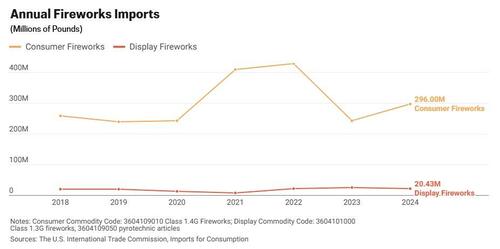
U.S. fireworks companies rely almost entirely on China, which produces 99 percent of consumer fireworks and 90 percent of professional display fireworks, according to the American Pyrotechnics Association. In 2024, China accounted for 98 percent of total fireworks imports to the United States.
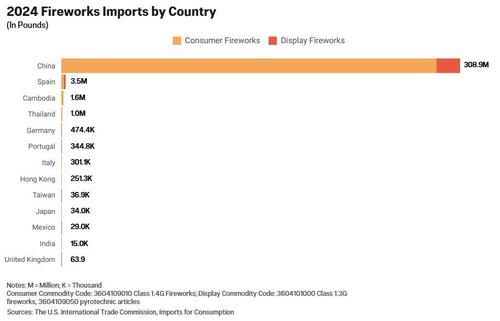
In February, consumer fireworks imports increased by 83 percent, compared to the average for that month in previous years. The spike occurred after President Donald Trump imposed an additional 10 percent tariff on imports from China on Feb. 1.
Fireworks imports typically have a seasonal peak in May or June, with the highest monthly imports recorded in June 2022. The 2022 rebound resulted primarily from the post-pandemic recovery.
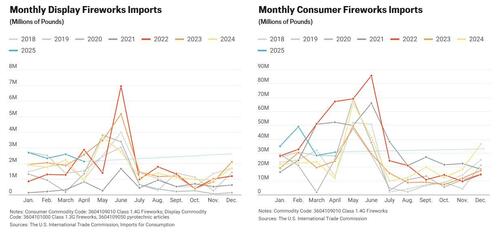
COVID-19 put a damper on traditional Fourth of July celebrations, with the most parades and gatherings canceled for July 4, 2020. In March 2021, a year after the COVID-19 shutdown began, President Joe Biden predicted that Americans could return to small group gatherings by that year’s Fourth of July. By June 2022, 38 states had ended their COVID-19 emergency declarations and the country experienced record levels of imported fireworks.
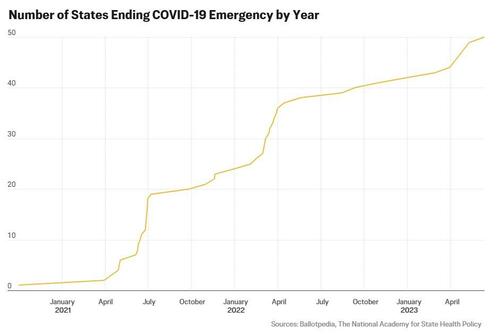
Fewer Americans are tuning in to the Macy’s Fourth of July Fireworks Special on NBC, compared to a decade ago. Broadcast viewership dropped 20 percent annually between 2018 and 2020, but has stabilized at an average of 4.4 million viewers over the past four years. Meanwhile, ratings among adults aged 18-49 have declined, from 1.5 percent a decade ago, to 0.6 percent in 2024.
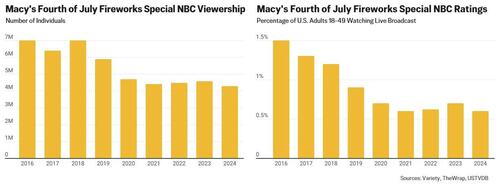
In 2021, Joey Chestnut set a new record eating 76 hot dogs and buns in 10 minutes in the Nathan’s Famous Hot Dog Eating Contest held on Coney Island, New York, every July 4. After his record-setting performance, men’s totals slightly declined in subsequent years. The women’s record of 51 hot dogs was set by Miki Sudo in 2024, and marked her 10th title.
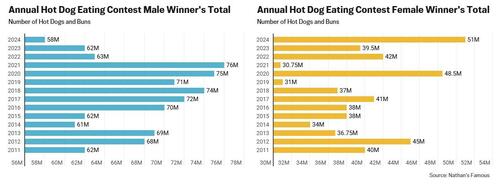
Over the past three years, New Yorkers have taken fewer subway rides during the week of the Fourth of July holiday, with an average decline of 15 percent compared to June totals. July ridership rebounded after the holiday week, at an average increase of 11.8 percent. During Thanksgiving week, subway ridership also decreased, falling by 21 percent compared to typical weeks in November.
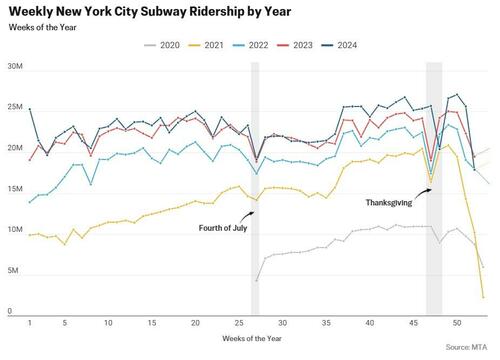
Vehicle travel in the United States fluctuates seasonally, typically peaking in July due to warmer weather and holidays, and dipping in February. In July 2021, Americans drove 296.5 billion miles, enough to circle the Earth nearly 12 million times.
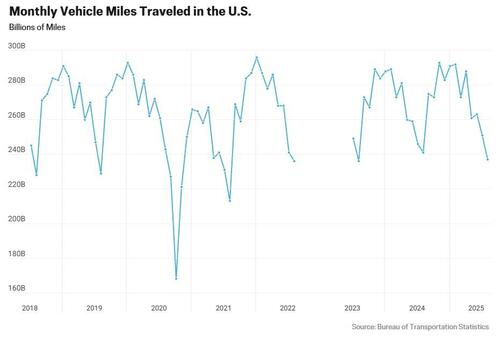
An average of 86 percent of Americans planned to celebrate the Fourth of July over the past decade. The only dip in overall celebrations occurred in 2020, when engagement decreased by 10 percent. That year, an average of 62 percent opted for cookouts, barbecues, or picnics, activities that were minimally affected by the pandemic shutdown.
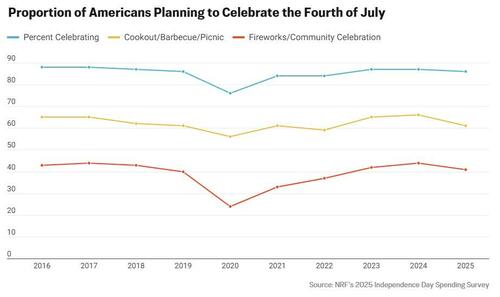
Attendance at fireworks shows declined to 24 percent in 2020, but gradually recovered to more than 40 percent in 2023, returning to pre-pandemic levels.
Tyler Durden
Fri, 07/04/2025 – 10:45


















